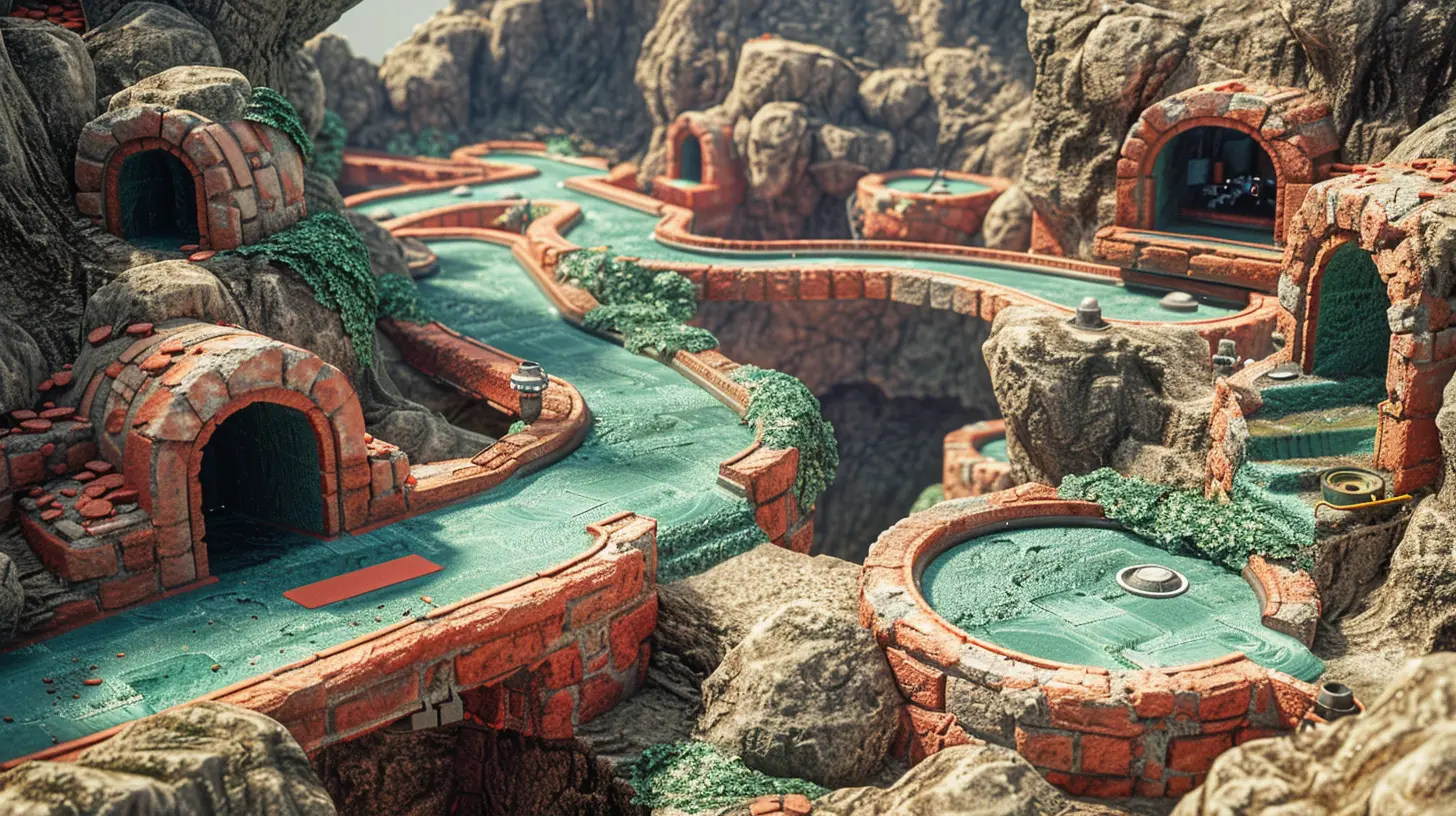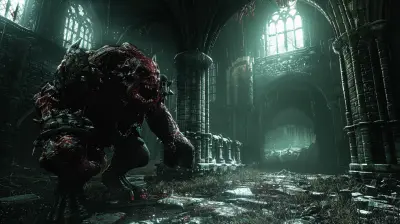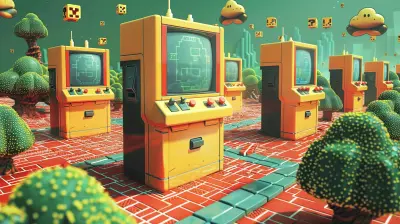Feedback Loops in Game Design: Rewarding Players for Mastery
29 May 2025
When was the last time you played a game that you just couldn’t put down? A game that had you saying, “Alright, just one more level,” only to suddenly realize it’s 2 a.m.? Chances are, a lot of that addictive magic was thanks to one clever trick: feedback loops. These bad boys are the secret sauce of game design, quietly working behind the scenes to keep you hooked, engaged, and striving for mastery.
In this article, we’re going to dive headfirst into the fascinating world of feedback loops in game design. We’ll break down what they are, why they work, and how they reward players for their dedication and skill. So, pull up a chair, grab your favorite beverage, and let's geek out.
What Are Feedback Loops?
At their core, feedback loops are systems of cause and effect, where a player’s actions directly influence the game environment, which then feeds back into affecting the player’s future actions. Confused? Don’t worry—it’s simpler than it sounds. Think of it like this: you do something in a game, the game reacts, and then that reaction motivates you to do something else. It’s like a cycle, and that cycle is what keeps you coming back for more.Feedback loops come in two flavors: positive and negative. And no, this isn’t about good vibes versus bad vibes… although the names might make it seem that way. Let’s break it down.
Positive Feedback Loops
Picture this: You’re playing an RPG, and you just leveled up. Sweet! With that shiny new level, you gain better gear, more powerful abilities, and the chance to tackle tougher enemies. As a result, you feel stronger and more accomplished, which pushes you to keep playing and leveling up even more. That’s a positive feedback loop in action.In games, positive feedback loops work by rewarding the player’s success and encouraging them to keep going. It’s like an ever-growing snowball rolling downhill—the better you do, the more rewards you get, and the more you want to keep succeeding.
Sounds perfect, right? Well, yes… and no. Positive feedback loops can be super satisfying, but if they get out of control, they can lead to power imbalances or make a game feel “too easy.” Designers have to carefully balance these loops to maintain the fun without things spiraling into chaos.
Negative Feedback Loops
Now let’s flip the coin. Negative feedback loops are systems designed to create balance by pulling back on a player’s progress or success. Hold up—this doesn’t mean they’re punishing or unfair! Instead, they’re there to challenge players and keep things interesting.For example, think about racing games. If you’re zooming way ahead in first place, the game might throw some obstacles your way, like tougher terrain or AI opponents suddenly gaining speed. This is a negative feedback loop kicking in, nudging you to stay sharp and not get too comfortable. On the other hand, if you’re falling behind, the game might give you a slight boost (like the infamous “rubber-banding” AI), helping you close the gap and keeping the race competitive.
Negative feedback loops are all about balance. They keep games from becoming frustratingly one-sided, making sure players feel both challenged and capable of success.
Why Feedback Loops Matter in Game Design
At this point, you might be thinking, “Okay, cool… but why should I care about feedback loops?” The short answer? They’re what make games feel good. The long answer? Let’s dig into it.1. Keeping Players Engaged
Feedback loops are a game designer’s secret weapon for keeping players engaged. By providing constant rewards (like loot, XP, or story progression) or challenges (like tougher enemies or harder puzzles), they create a sense of momentum that keeps players immersed. It’s the psychological equivalent of dangling a carrot on a stick—except, in this case, you actually get to eat the carrot.2. Encouraging Mastery
Games are, at their heart, systems of skill and strategy. Feedback loops play a huge role in helping players learn the ropes, improve their abilities, and eventually achieve mastery. Positive loops reward players for their achievements, reinforcing good habits and strategies. Negative loops, meanwhile, push players to adapt and overcome obstacles, helping them grow.It’s like learning to ride a bike: every time you pedal without falling, you get a rush of confidence (positive feedback). But every time you hit a wobbly patch, you learn to balance better next time (negative feedback). Over time, these little loops combine to turn you into a bike-riding pro—or, in the case of games, a master of whatever challenge the designers have thrown at you.
3. Enhancing Replayability
Great games don’t just hook you the first time around—they make you want to come back for more. Feedback loops are a big part of what gives games their replayability. Think about games like “Dark Souls” or “Hades.” Even after you’ve beaten them, the tightly designed feedback systems (like skill progression, item rewards, or adaptive difficulty) make each playthrough feel fresh and rewarding.
Real-World Examples of Feedback Loops in Games
Enough theory—let’s talk specifics. How do feedback loops actually play out in some of our favorite games? Here are a few standout examples.1. The Legend of Zelda: Breath of the Wild
“Breath of the Wild” is a masterclass in feedback loops. Its open-world design encourages exploration, rewarding players with better gear, new abilities, and vital resources as they uncover secrets across Hyrule. Positive feedback loops come into play as you gain experience and become stronger, which opens up more of the world to explore.But there’s also a subtle negative loop: if you wander into an area that’s beyond your current power level, the game humbles you with tougher enemies or environmental challenges. This gently nudges you to come back later, after you’ve leveled up or upgraded your gear.
2. Dark Souls Series
Ah, “Dark Souls.” The franchise is notorious for its brutal difficulty, but it wouldn’t be nearly as beloved without its clever use of feedback loops. Positive loops reward players’ perseverance with better weapons, shortcuts, and the sweet satisfaction of overcoming seemingly insurmountable odds. Meanwhile, the game’s punishing death mechanics create a negative loop, forcing players to learn from their mistakes and adapt their strategies.Each victory in “Dark Souls” feels hard-earned, precisely because of how the feedback loops push and pull you along the way.
3. Stardew Valley
Not all feedback loops are about combat or challenge—some are just about good vibes. Take “Stardew Valley,” for example. The game’s core loop revolves around farming, where you plant crops, water them, and watch them grow. Each harvest rewards you with money, which you can then reinvest into better tools, seeds, or expansion projects.This positive feedback loop creates a cozy sense of progression that makes it hard to walk away from “just one more day” on the farm.
Designing Effective Feedback Loops
If you’re a game designer (or just a curious gamer), you might be wondering: how do you actually create effective feedback loops? Here are a few tips:1. Balance Is Key: Too much positive feedback, and your game might feel too easy. Too much negative feedback, and it could become frustrating. Striking the right balance is crucial.
2. Keep It Clear: Players should always understand the cause-and-effect relationship in a feedback loop. If they don’t know why the game is rewarding or challenging them, they’ll feel lost or unmotivated.
3. Build For Mastery: Good loops should encourage players to improve their skills over time. Offer challenges that scale with their abilities, and reward them in meaningful ways.
4. Adapt To Players: Not all players have the same skill level or playstyle. Consider implementing adaptive systems that tailor feedback loops to individual players.
Wrapping It Up
Feedback loops might not be the flashiest part of game design, but they’re absolutely essential to creating games that players love. Whether it’s the thrill of leveling up, the challenge of overcoming obstacles, or just the satisfaction of progress, feedback loops are what make games feel rewarding and engaging.The next time you’re playing your favorite game, take a moment to appreciate the intricate systems working behind the scenes to keep you hooked. Who knows—you might just develop a whole new level of respect for the art of game design.
all images in this post were generated using AI tools
Category:
Game MechanicsAuthor:

Francesca West
Discussion
rate this article
4 comments
Harper Coleman
Great insights! Rewarding mastery truly enhances player engagement and makes gaming even more fun!
June 18, 2025 at 3:51 AM

Francesca West
Thank you! I'm glad you found the insights valuable. Rewarding mastery is indeed key to enhancing player engagement!
Thaddeus Henderson
Ah, feedback loops in game design—because who doesn’t want to grind for hours just to feel like a minor deity? Mastery rewards are the ultimate way to make players feel accomplished while secretly wondering why they just spent their Saturday leveling up a pixelated hero instead of... you know, life.
June 8, 2025 at 2:42 PM

Francesca West
Absolutely! Feedback loops effectively balance challenge and reward, making players feel accomplished while immersing them in the game world—though it does raise questions about our time investment!
Destiny McIlwain
Feedback loops in game design resonate deeply with our innate desire for mastery; they transform challenges into meaningful growth experiences, fostering engagement while subtly shaping our understanding of achievement and perseverance.
June 7, 2025 at 4:52 AM

Francesca West
Thank you for your insightful comment! I completely agree—feedback loops are essential in enhancing player engagement and fostering a sense of achievement through mastery and growth.
Tia Wells
Mastery isn’t just a reward; it’s a relationship! If your game doesn’t keep players hooked with juicy feedback loops, good luck competing with the real MVPs of fun!
June 5, 2025 at 4:40 PM

Francesca West
Absolutely! Mastery thrives on engaging feedback loops that keep players invested and motivated, which is essential for any game's success. Thank you for your insightful comment!



